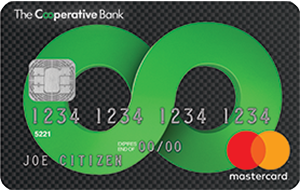Balance Transfer Steps
Step 1. Compare Balance Transfer Offers
There are usually lots of balance transfer offers to choose from, so it’s important to compare the options to find the one that’s right for you. Use a balance transfer calculator to see how much you could save on each offer. Typically, choosing the lowest interest rate over the longest period of time offers the best deal.
Step 2. Compare Balance Transfer Cards
Even if you are only using the card for its balance transfer offer, it’s a good idea to take a closer look at what the card can offer. If you are only interested in the offer, it may be a good idea to look for a card with no annual fee and few frills. If you want the card in the long term, take note of its suitability in terms of purchase rate, annual fee and features.
Step 3. Check Your Eligibility For The Card
Before you apply for any credit card, you need to make sure you meet all eligibility requirements. These should be stated clearly on the card provider’s site, but you may also need to check the terms and conditions for more. If you are unsure, contact the card provider for more details before you apply.
Step 4. Check Your Eligibility For The Offer
All offers come with small print. It’s up to you to make sure you understand it. Some offers limit the amount you can transfer (usually expressed as a percentage of your approved credit limit). Most offers only allow transfers from other card providers. Again, if you’re unsure, contact the card provider for clarification.
Step 5. Apply
Now it’s time to apply. Applying online usually takes 10-15 minutes. You will have to provide details of the balance transfer, such as the balance transfer amount and your current provider. If you meet all eligibility requirements, you may be given instant approval. Alternatively, the card provider might ask you to provide further information.
Step 6. Close Your Old Card Account
Your new card provider will not close your old account. It’s up to you to do this, making sure there are no outstanding debts to pay off, or recurring payments to rearrange. While it’s obviously not essential that you close the account, it can help you to avoid the temptation to spend on it now that the balance has been moved onto your new card.
Step 7. Pay Off Your Balance
Start by creating a repayment plan, so you know exactly how much you will need to pay off each month to clear your balance within the introductory period. Then set up automatic payments for that amount so you don’t forget. Avoiding new spending can help you keep to this repayment plan.
Paying Off A Balance Transfer
Understanding how balance transfers work can help you take full advantage of what they have to offer. This includes knowing how payments are allocated. When you make a payment on your card, it will usually go towards paying off the balance with the highest interest first. That means your payment will pay off any cash advances or purchases before your balance transfer.
If you want to focus on paying off your transferred balance, it can be a good idea to avoid new spending. Doing this will mean the entirety of each payment you make will go towards paying off your transferred balance. It’s also worth bearing in mind that if you have a balance transfer to pay off, there are no interest free days on new spending. That means any purchases you make will accrue interest from day one, making it harder to pay off your balance.
Making The Most Of A Balance Transfer
Focus On Paying It Off
A balance transfer takes commitment to pay it off. It’s not a short term solution, allowing you to move your balance from one account to another to avoid paying it off. Make the most of the offer’s lowered interest to really make a dent in your debt.
Understand What Happens After
If you fail to pay off your transferred balance, it will revert to the card’s purchase rate or cash advance rate. If this revert rate is high, you will then have to deal with interest accruing on your balance much more quickly. Be sure to check the revert rate and consider that in your card comparison.
Balance Transfer Pros and Cons
- Pay less in interest on your transferred balance
- Clear your debt faster
- Pay off and close an old card that no longer suits you
- Switch to a new card suits your needs
- If you spend on your old card you may end up in worse debt
- If you don’t pay off your balance it may revert to a high rate
Think a balance transfer offer would work well for you? See how much you could save by switching – check out the range of balance transfer cards here on CreditCard.co.nz today.














Dany
5 October 2020Roland
19 October 2020